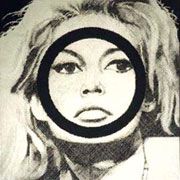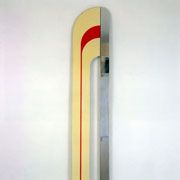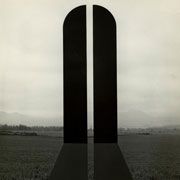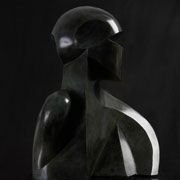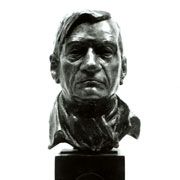
Catalogue Raisonné. Twentieth Century Monument
Search the Catalogue
Twentieth Century Monument
Catalogue No. 303
Artist's CR 289
1973
Kinkell
COR-TEN and stainless steel
11 x 23 x10 inches / 28 x 58 x25 cm
Collection: Private collection
- Laing Mylius Scobie, Cleish Castle, near Kinross, 1975
- Gerald Laing: Paintings and Sculpture 1963–1983, Herbert Art Gallery & Museum, Coventry, 1983
- Gerald Laing: Sculpture 1968–1999, The Fine Art Society, London, 1999
- Gerald Laing: Sculpture 1965–1978, The Fine Art Society, London, 2008
- Laing Mylius Scobie, exhibition catalogue, Cleish Castle, 1975
- Gerald Laing: Paintings and Sculpture 1963–1983, exhibition catalogue, Herbert Art Gallery & Museum, 1983
In 1969 I left New York and went to live in the north of Scotland. The new environment was in sharp contrast, both physically and socially, to the one I had just left. This change affected my work. Most of the pieces I made between 1969 and 1973 were large outdoor works, and cannot be shown in this exhibition. The largest of these is Callanish, which was nicknamed by the media ‘Steelhenge’, and which is installed in a specially landscaped area in the centre of the campus of Strathclyde University in Glasgow.
Twentieth Century Monument is an example of sculpture from this period. For the first time I began using volume in my sculpture, and the finishes became far less obsessive than those I had used in New York.
Gerald Laing: Paintings and Sculpture 1963-1983, Gerald Laing, exhibition catalogue, Herbert Art Gallery, Coventry, 1983
From the end of 1969 to the end of 1973 all Laing’s work, however small he makes it, has the potential of great size - for example the 20th Century Monument, a new shape, has an almost illusionistic capacity for changing size. As little imagination is needed to see it dominating an American hill-top as to see it as a power-symbol dominating an executive’s desk. These suggestions already convey the meaning it has for me, which includes a glance back to the age of Hollywood. It combines the extremely ponderous shape of a flat-topped pyramid in rough Corten [sic] steel, with the still heavy but potentially active shape of an obtuse-angled form in polished stainless steel. What tension it has derives from these contrasts, and its force is buried deep down. It is like a powerful animal in deep sleep.
Laing Mylius Scobie: Sculpture at Cleish, Douglas Hall, exhibition catalogue, Cleish Castle, near Kinross, 1975

